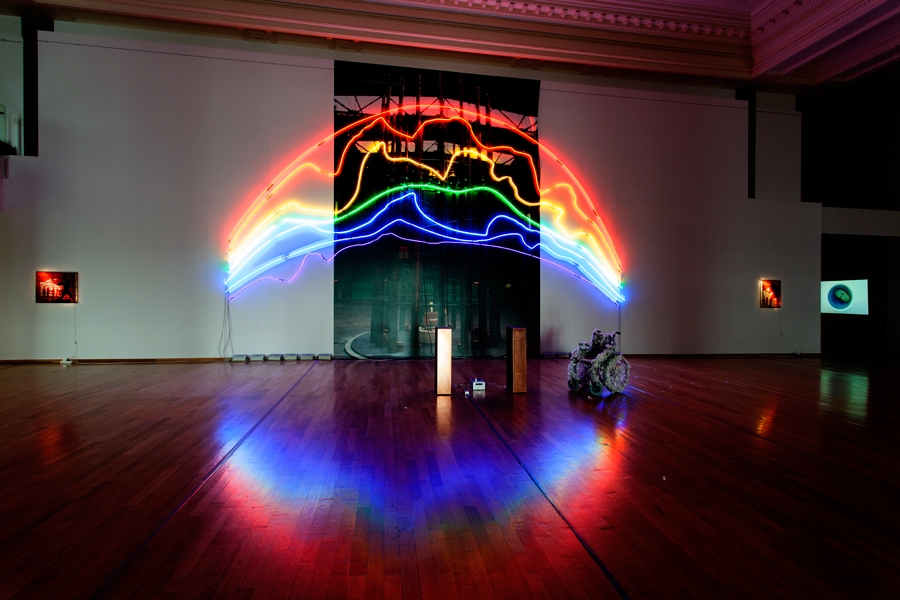ArtReview sent a questionnaire to artists and curators exhibiting in and curating the various national pavilions of the 2015 Venice Biennale, the responses to which will be published daily in the lead-up to the Venice Biennale opening.
Sarkis is representing Turkey. The pavilion is in the Arsenale.
What can you tell us about your exhibition plans for Venice?
For my installation at the Pavilion of Turkey, I created two giant neon works that have the space to breathe in the 500 m2 of the pavilion. They represent two enormous rainbows with colourful rays that are placed to form a sort of ‘Big Bang’, and thus are transformed into something unexpected. Two big mirrors divide the space, reflecting the rainbows. Seven children will “work” on these mirrors to create galaxy-like shapes in seven colours of the rainbow using their fingerprints. A musical composition, created especially for this exhibition by composer Jacopo Baboni Schilingi, will be playing day and night. The “breathing” rays of the neon rainbow will continuously fill the space of the pavilion (even after its closing). 36 of my stained glass works of images from different countries and cultures will also be hung in the space.
Are you approaching this show in a different way as to how you would a ‘normal’ exhibition?
I always pay attention to the exhibition location: its history, architecture, memory and context, as well as to its timing. On this occasion my exhibition takes place in the Pavilion of Turkey in Venice, at the Arsenale, in a space of great architectural unity… As you probably understood from my first paragraph, I am working on an installation, which reaches beyond the immediate and towards the creation of our universe. It is open to all cultures and to beliefs of all countries. I should also add that I am invited to take part in the exhibition of the Pavilion of Armenia. I will be one of 16 participating artists of Armenian origin.
What does it mean to ‘represent’ your country? Do you find it an honour or problematic?
As you probably know, for at least forty years my work has opened up increasingly to all cultures, to all beliefs, to science, philosophy, music, architecture… to the history of the creation of our world; to how we perceive, how we ‘feel’ this creation; how we personalise and express all these sensations; my aim is to expand the ‘territory’ of art.
How are you approaching the different audiences who come to Venice – the masses of artist peers, gallerists, curators and critics concentrated around the opening and the general public who come through over the following months?
I am conscious of the fact that there will be hundreds of exhibitions; visitors will be in a rush, running from one exhibition to another. They will have a maximum of a couple of minutes to contemplate, listen, live … I say that’s too bad. That’s the rule of today’s art world, based on the experience of art fairs. I choose to take another stance with my installation, as it is something that already exists prior to the opening on 7 May and that will continue to exist after the end of the Biennale. I do not want to make any calculations. My installation will be completely public, in the sense of being public for everyone who comes to visit the monuments of Venice to discover its masterpieces.
What are your earliest or best memories of the biennale?
Two installations that have had the biggest impact on me in previous Venice Biennales: one by Joseph Beuys, I believe it was in 1977 in the German Pavilion, as well as an installation by Hans Haacke, also at the German Pavilion.
You’ll no doubt be very busy, but what else are you looking forward to seeing?
Every time I visit Venice, I go to the Scuola di San Giorgio degli Schiavoni to see the works of Carpaccio.
Read all responses to the Venice Questionnaire 2015 edition published so far
Read all 30 responses to the Venice Questionnaire 2013 edition
